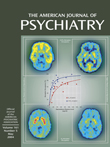To the Editor: With great interest, we read the article by Ralph E. Hoffman, M.D., and Idil Cavus, M.D., Ph.D.
(1), who discussed the results of a recent study of slow repetitive transcranial magnetic stimulation (rTMS) on the attentional processing of threatening facial expressions
(2). They considered those results consistent with the findings of McCann et al.
(3), who reported reductions in the symptoms of posttraumatic stress disorder (PTSD) after slow rTMS over the right prefrontal cortex. Since enhanced reactivity to a perceived threat is a central symptom of PTSD, the demonstration of reduced attention to threatening faces after slow rTMS over the right prefrontal cortex
(2) would, according to Drs. Hoffman and Cavus, not only fit the valence model of approach- and withdrawal-related emotion but also provide evidence concurring with the study by McCann et al.
(3).
Although we, in fact, showed enhanced attention to threatening (angry) facial expressions after right prefrontal cortex rTMS
(2), our finding is in accordance with the valence model. Threat can be displayed by fearful and angry facial expressions, but whereas fear is a withdrawal-related emotion associated with relatively more right-sided activity of the prefrontal cortex, anger is an approach-related emotion associated with relatively more left prefrontal cortex activity
(4). The local inhibitory effects of slow rTMS of the right prefrontal cortex induce relatively more left prefrontal cortex activity and thus enhance attention to angry faces
(2). Slow rTMS of the right prefrontal cortex should contrariwise reduce attention to fearful faces since there is clearly relatively less right prefrontal activity. In agreement, we recently demonstrated reduced attention to fearful faces in a placebo-controlled study of slow rTMS over the right prefrontal cortex
(4). These findings concur with the reductions in fear-related PTSD symptoms by McCann et al.
(3) Moreover, rTMS-EEG research indicates that the reductions in attention to fearful faces
(4) are anxiolytically mediated and that the local inhibitory effects of right prefrontal cortex rTMS result in excitation of the left prefrontal cortex
(5). Such left prefrontal cortex excitation after slow rTMS of the right prefrontal cortex is not counterintuitive but is defensibly due to reductions in transcallosal inhibition, a crucial mechanism in the valence model of emotion.
In sum, when discussing the motivational and neurobiological mechanisms by which slow rTMS over the prefrontal cortex reaches its effects on approach- and withdrawal-related emotion, the phenomenon of contralateral inhibition between the hemispheres and the exact nature of the emotional index of behavior should be taken into account.

